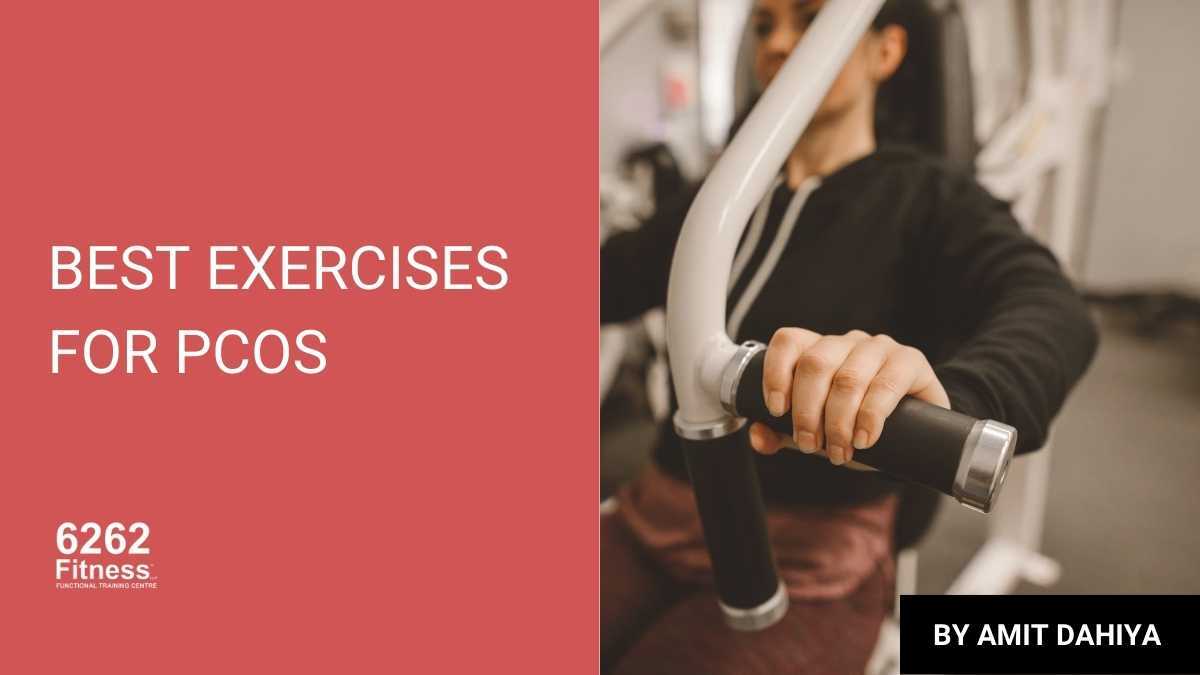
It has always been difficult to lose weight, but it is considerably more difficult for women with polycystic ovary syndrome (PCOS). Nearly half of all women with this hormonal disease are overweight, exacerbating the condition’s symptoms. It’s not that they don’t work hard enough to lose weight; instead, it’s a hormonal imbalance that interferes with how their body metabolizes food and makes it difficult for them to lose weight. They are in a very different state than other people trying to lose weight. To get past the obstacle, they must put in more work and match their food to their health. Here are 5 weight-loss suggestions tailored specifically for PCOS sufferers.
The 5 best weight loss tips for PCOS sufferers are as follows
- Cardiovascular steady-state exercise
- HIIT
- Mind-body Exercise
- Strength Training
- Fighting infertility in PCOS
- Takeaway
Cardiovascular steady-state exercises
If you’re doing moderate exercise, these exercises will raise your heart rate to 50 to 70 percent of its maximum. Subtract your age from 220 to determine your maximal heart rate. Walking, bicycling, dancing, and participating in aerobics classes are all examples of aerobic exercises that fall under this category.
Exercises that are moderate in intensity, such as brisk walking, jogging, etc., are frequently referred to as CARDIO and are excellent for treating PCOS. By increasing your body’s sensitivity to insulin, this kind of exercise lowers your risk of developing type 2 diabetes and cardiovascular disease. A daily workout of at least 30 minutes can help with weight control, anxiety and depressive symptoms, menstrual cycle regularity, and ovulation. Additionally, regular modest exercise can improve your chances of getting pregnant if you begin IVF.
HIIT
Workouts using high-intensity interval training (HIIT) entail alternating periods of intensive exercise with rest periods. Burpees, tuck leaps, and mountain climbers are examples of typical HIIT workouts. According to research in the peer-reviewed publication PLOS ONE Trusted Source, women with obesity enjoyed HIIT activities more than they did continuous moderate to intense exercise. The ability to enjoy exercise is crucial for maintaining a routine over time.
Interval training is a means to exercise at various intensities, though not always to your maximum heart rate, as with HIIT. Various activities are frequently performed in the same session to keep your heart rate up during this training.
Mind-body exercises
According to a report in the journal Physical Exercise for Human Health, studies suggest that women with PCOS have a heightened physical response to stress and anxiety. Yoga, Pilates, and tai chi are mind-body workouts that can burn calories and lower stress levels, increasing PCOS symptoms.
Strength training
Strength training enhances metabolic rate, lowers insulin resistance, and improves body composition (more muscle and less fat tissue). Use resistance bands, weights, or your body weight to increase muscular mass. This kind of exercise can aid in developing strong bones and muscles. By increasing your muscle mass, you may be able to burn more calories when at rest and keep a healthy weight. Squats, push-ups, and triceps dips are bodyweight activities that enhance insulin function while increasing muscle mass, increasing metabolism. But don’t worry, you won’t bulk up unless you use steroids. Having more muscle means burning more calories during exercise and all day long, even at rest. The most incredible method to ensure you’re developing a lean body, achieving a healthy BMI, and lowering your risk of chronic diseases like type 2 diabetes is to combine resistance exercises with cardio workouts. You can join our online fitness class to achieve your fitness goals.
Fighting Infertility in PCOS
According to a study published in the journal Physical Exercise for Human Health, PCOS affects as many as 80% of women who struggle with infertility due to irregular ovulation.
Women can enhance the regularity of their periods and restore their ovulation cycles by exercising and, ideally, losing at least 5% of their body weight. Combining diet and exercise is more beneficial in controlling PCOS and infertility than diet alone.
The Androgen Excess and PCOS Society suggests increasing your exercise level when you can and receiving at least 30 minutes of moderate to strenuous physical activity per day. You can incorporate exercise into your life in a variety of ways, such as the following:
- Set up six stations and design your interval training plan where you work out for one to two minutes each. Some instances could be squats, jumping jacks, lunges, crunches, and bicep curls.
- Every day, spend 30 to 45 minutes walking on a treadmill or outside.
- Attend an aerobics class at a gym or online. Step, dancing, boxing, and spinning are a few examples.
- Attend a HIIT class at a fitness center or online. There are several at-home workout videos available on YouTube. Just make sure the source of the routine is respected.
- Utilize an online class, a studio, or a gym to practice yoga, Pilates, or tai chi. If you have never practiced, you might want to ask a trainer for advice so they can assess your form and safety.
- If sticking to an exercise regimen is difficult for you because you get bored, mix up your workouts by doing a different exercise three times a week, for example.
Losing weight without exercise is not possible for anyone. Exercise before meals is always advised for PCOS patients because it might help to increase metabolism and reduce fat storage. Increase your focus on exercises with high-intensity levels, which can help you burn more calories in less time.
Your PCOS management plan may include exercise. Exercise benefits your physical health and your ability to control stress.
The recommended form of exercise for managing PCOS symptoms is light to moderate activity. Difficult or strenuous exercise is not advised if your period is irregular since it might put your body under additional stress, and further impairs our menstrual cycle. Prioritize circuit-based training, strength, and mobility. Walking, Pilates, yoga, swimming, and moderately intense weight training are all excellent kinds of exercise in this location.
Finding a personal trainer and visiting your doctor might assist put you on a safe route if you are unsure where to begin. If you commit to exercising at least three times each week, your PCOS symptoms may get better.


